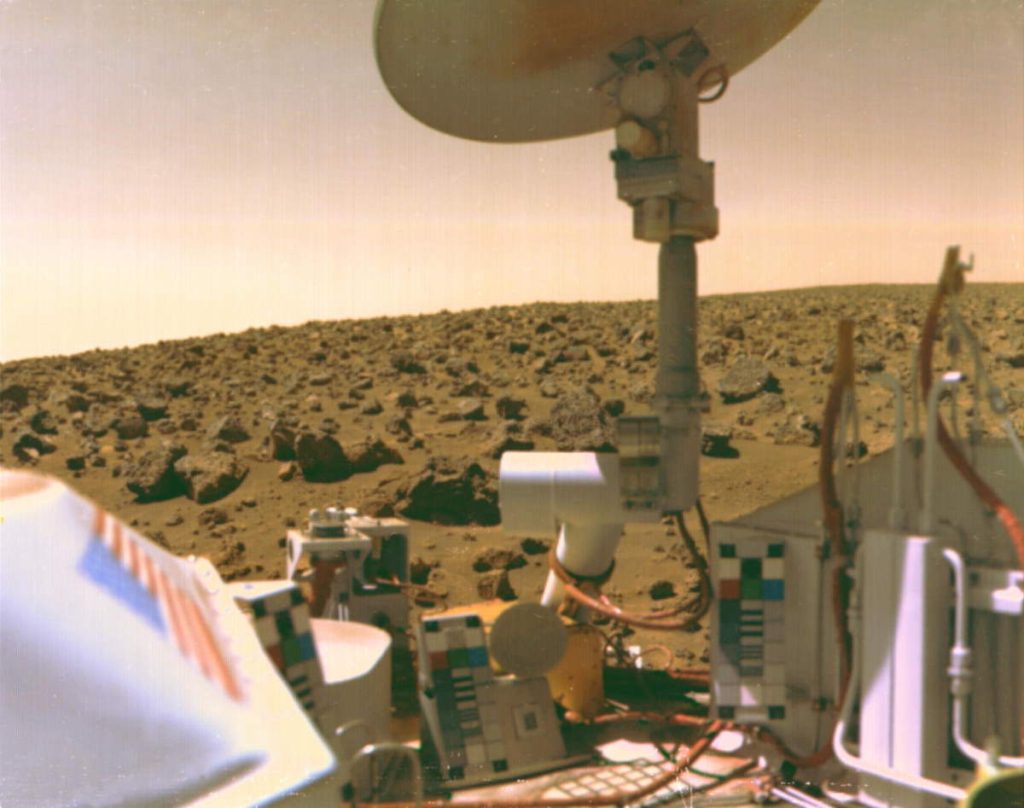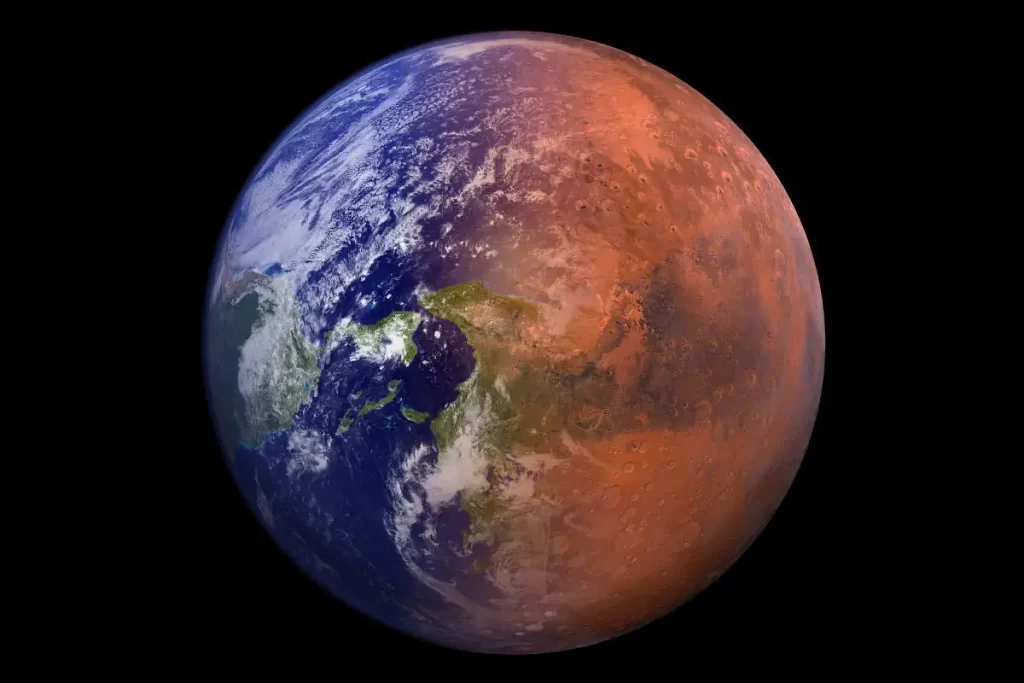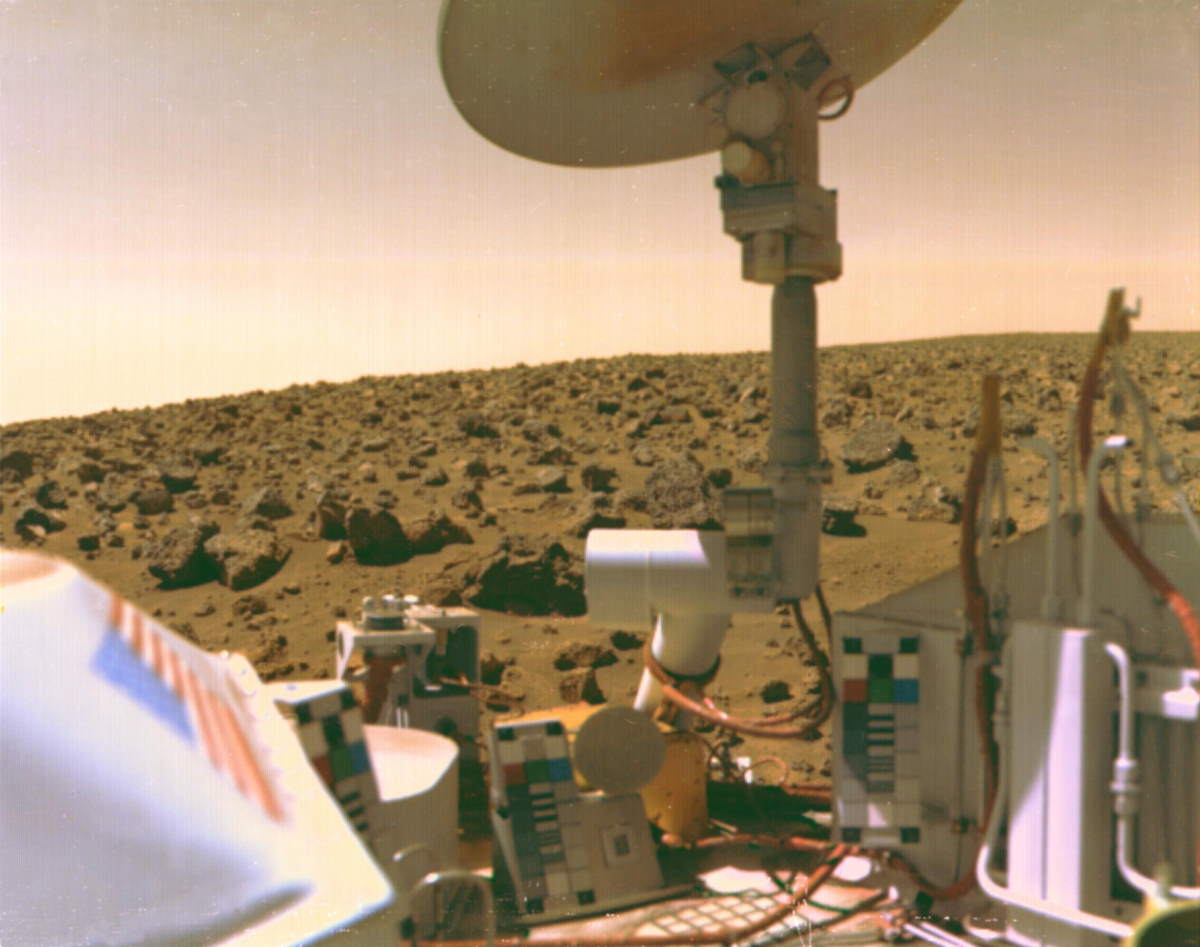On September 3, 1976, the lander of NASA’s Viking 2 spacecraft (which consisted of an orbiter and a lander) separated from the orbiter and safely landed on Mars.
Today’s (September 3) story of what happened this day in Science, Technology, Astronomy, and Space Exploration history.
Viking 2
NASA launched Viking 2 spacecraft on September 9, 1975, from Cape Canaveral on top of a Titan IIIE rocket (Titan IIIE with Centaur upper stage).
The spacecraft consisted of an orbiter and a lander. It was identical to Viking 1, which was launched on August 20, 1975, and entered Mars orbit on June 19, 1976 (its lander landed on Mars on July 20, 1976).
Viking 2 entered orbit around Mars on August 7, 1976. Its lander separated from the orbiter on September 3 and touched down safely about 4,000 miles (6,460 kilometers) from the Viking 1 lander. It landed on Utopia Planitia near the edge of the north polar ice cap where water was located and where there was a better chance of finding signs of life.
Touchdown coordinates were 47.968° north latitude and 225.71° west longitude.

NASA’s Viking Project is the first U.S. mission to land a spacecraft safely on the surface of Mars and return images of the surface. Each orbiter-lander pair of these two identical spacecraft flew together and entered Mars orbit, the landers then separated and descended to the red planet’s surface.
The Viking 1 lander touched down on the western slope of Chryse Planitia (the Plains of Gold), while the Viking 2 lander settled down at Utopia Planitia (Greek and Latin: “Nowhere Land Plain”).
The Viking 2 biology experiment consisted of three subsystems:
- Pyrolytic Release experiment (PR)
- Labeled Release experiment (LR)
- Gas Exchange experiment (GEX).
In addition to these subsystems, independent of the biology experiments, Viking 2 carried a Gas Chromatograph/Mass Spectrometer (GCMS) that could measure the composition and abundance of organic compounds in the Martian soil.
The results were a bit surprising and interesting:
- GCMS gave a negative result
- PR gave a positive result
- GEX gave a negative result
- LR gave a positive result.
Many scientists think that the positive results were due to inorganic chemical reactions in the soil. Mars has no ozone layer, so Martian soil contains reactants created by the ultraviolet bombardment of the soil that could produce characteristics of living organisms in Earth soil.

Related: How Mars Died? The Death Of Mars
Biology experiments
Viking 2 lander started biology experiments on September 12. But, these experiments were inconclusive on whether life exists or ever has existed on the surface of Mars.
Photo: Martian panorama by Viking 2

The photo above shows the Viking 2 panorama of the Martian surface. It was acquired at the Viking Lander 2 site with camera number 1. Some parts of the Lander are visible in the foreground and to the left and right.
The angular rock, also visible in the fourth image, is visible to the far right in this frame. This image illustrates that the drifts at this landing site are generally smaller than those at Lander 1, while blocks at the Lander 2 site are, in general, larger and more abundant.
The high-resolution images used to make this image were processed to remove distortion introduced by the special electronic cameras on board the Landers. The sky has also been smoothed so as to appear more natural.
This synthetic high-resolution color image was created by combining standard low-resolution Viking Lander color images with standard high-resolution Viking Lander black and white images, using image processing techniques. In simple terms, the colors are separated from the color image. Using the computer, those colors are then painted onto high-resolution images covering the same area.
The image has had its colors balanced to approximate what would be seen if the Martian surface materials were on Earth. In other words, the image shows an estimate of the colors of the terrain as if illuminated under Earth-like, rather than Martian, lighting to aid geologists. Ordinarily, images are redder, since the Martian atmosphere carries extremely fine-grained red dust in suspension.
Mission duration
On November 16, 1976, NASA announced that both Viking 1 and Viking 2 missions had successfully accomplished their mission goals and announced an extended mission that continued until May 1978 followed by a “Continuation Mission” until July 1979.
The orbiter continued its successful imaging mission, coming within 17 miles (28 kilometers) of the Martian Moon Deimos in May 1977.
A series of leaks prompted the termination of the Viking 2 orbiter operations on July 24, 1978, while the Viking 2 lander continued to transmit data until April 12, 1980.
Overall mission durations of the Viking 2 orbiter and lander were:
- Orbiter: 1050 days (1022 sol, see notes 1)
- Lander: 1316 days (1281 sol)
- Launch to the last contact: 1676 days
Notes
- A Sol is a Martian day. A Mars day is slightly longer than a day here on Earth: a sidereal day is 24 hours, 37 minutes, and 22 seconds (on Earth, it is 23 hours, 56 minutes, and 4.1 seconds) and a solar day is 24 hours, 39 minutes, and 35 seconds (on Earth, 24 hours).
Sources
- Viking 2 on the NASA Solar System Exploration website
- Viking 2 on the NASA Jet Propulsion Laboratory website
- Viking 2 on Wikipedia
- Moon Landings: All-Time List [1966-2025] - February 2, 2025
- What Is Max-Q and Why Is It Important During Rocket Launches? - January 16, 2025
- Top 10 Tallest Rockets Ever Launched [2025 Update] - January 16, 2025
